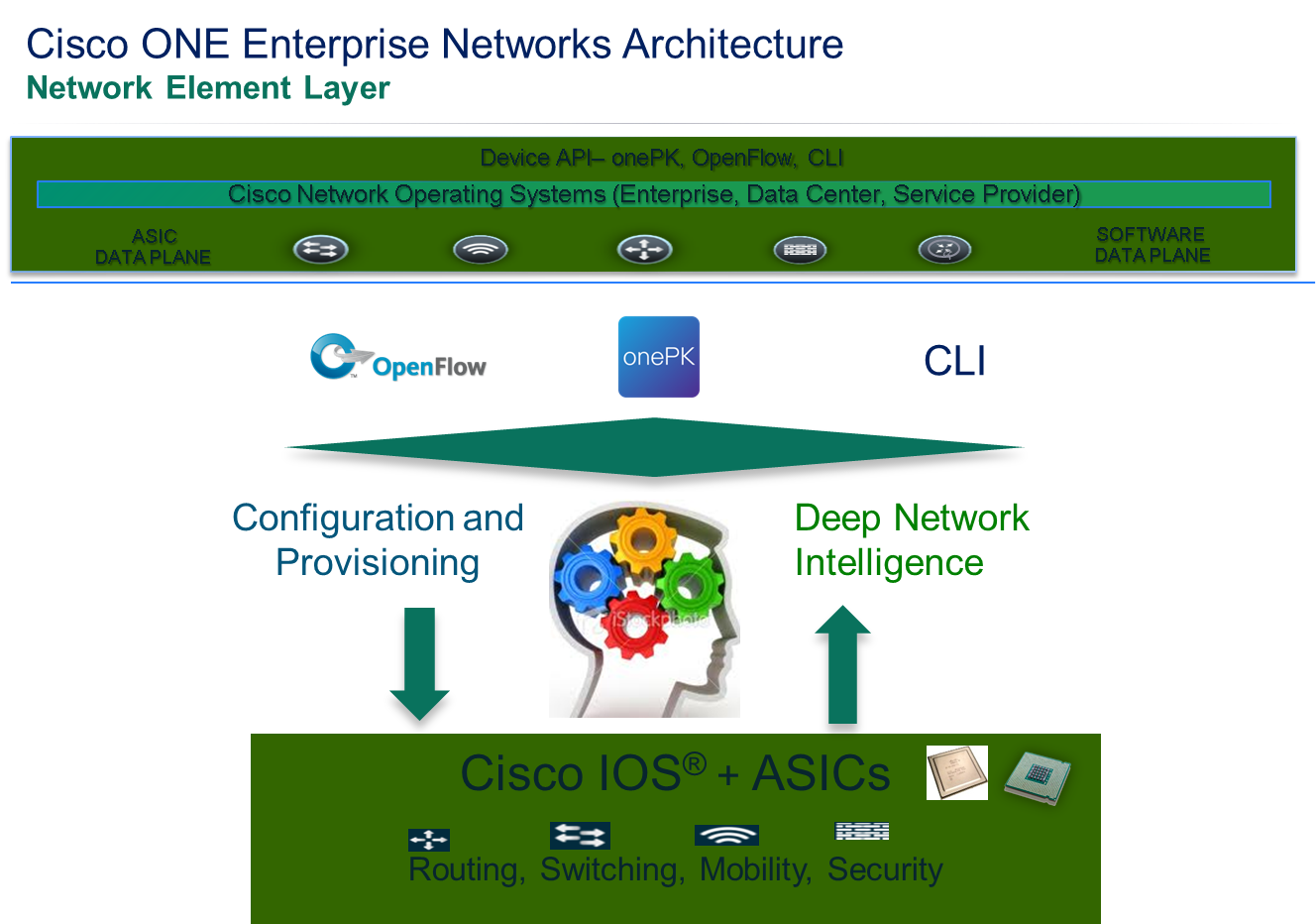































In my last blog I discussed how Cisco ONE Enterprise Networks Architecture fits with the Cisco ONE. Let's now look at how the new Cisco ONE Enterprise Architecture provides at least 6 significant benefits to Enterprises. ONE + ONE = 6!
Problems that Enterprises are facing:
As enterprises are consolidating their IT infrastructure into private cloud (enterprise data-centers) or public/hybrid clouds they're realizing massive economies of scale in application deployments. Further, they're taking advantage of XaaS (Software/Infrastructure as a Service) offerings from Cloud Service Providers with Pay As You Go models that increase the speed of deployment and the agility of their business critical applications. This is a major shift in how applications are now being delivered over the WAN to their end-users in branch offices and on mobile/BYOD devices. IT consolidation and virtualization in the data-center are placing a lot of requirements on the enterprise WAN. Business agility and end-user and customer application experience are imposing critical requirements on the WAN. The major challenges that enterprises are facing with cloud migration are:
How Cisco ONE + ONE Enterprise Networks Architecture address these problems:
Here is what Enterprises can expect as additional benefits from the Cisco ONE Enterprise Networks Architecture. At each layer there are significant benefits that accrue due to Cisco ONE.
Network Element Layer:
This layer provides the industry's richest set of devices with service-rich IOS and open APIs. The combination of Cisco IOS + ASICs and APIs enables the Network Element Layer to convey deep network intelligence to the Control Layer. The same APIs allow the Control Layer to automate the configuration and provisioning of all the network devices, simplifying network provisioning. Figure 1 shows the details of the Network Element Layer.
 Figure 1: Network Element Layer of Cisco ONE Enterprise Networks Architecture
Figure 1: Network Element Layer of Cisco ONE Enterprise Networks Architecture
From this Network Element Layer, Enterprises can expect these benefits:
Control Layer:
This layer provisions network services consistently across all network devices, instead of device by device. It creates a multi-layer abstraction for the enterprise network itself, improving enterprise agility and accelerating service deployment. And it optimally provisions services such as QoS and PfR, at the appropriate device or control layer. Figure 2 shows the details of the Control Layer.
 Figure 2: Control Layer of Cisco ONE Enterprise Networks Architecture
Figure 2: Control Layer of Cisco ONE Enterprise Networks Architecture
With the Cisco ONE/XNC Controller Enterprises can expect these benefits:
Network Application Layer:
This is the layer for network application, whether developed by Cisco, third parties or our customers, open APIs enable applications optimized for performance, innovation and user experience across the network. Figure 3 shows the details of the Network Application Layer.
 Figure 3: Network Application Layer of Cisco ONE Enterprise Networks Architecture
Figure 3: Network Application Layer of Cisco ONE Enterprise Networks Architecture
Building on top of the Network Element Layer and the Control Layer, the Network Application Layer is where Enterprises can expect these benefits:
To summarize, Cisco ONE and ONE Enterprise Networks Architecture provide enterprises with
Open application ecosystem, access to deep network intelligence and a network infrastructure that just works:Being able to create network and business applications on a foundation of a comprehensive, end-to-end network infrastructure that is programmable with open APIs creates a vast eco-system of 3rd party application developers that speeds up innovation for enterprises and respond rapidly to changing trends such as BYOD Access and Cloud Migration.
Cisco ONE Enterprise Networks Architecture brings the networks and applications closer together across the entire Enterprise network. This is true and effective openness of enterprise wide networks that increases the speed of the deployments of new services and applications. Through open APIs at each layer and deep access to network resources through programmability, Cisco ONE Enterprise Networks Architecture creates the mutual awareness of networks and applications. This mutual awareness helps enterprises overcome the WAN challenges.
What's next:
Thanks for reading and please comment on any and all aspects. More importantly please write:
I look forward to your comments. Thanks in advance. Stay tuned for the next blog post.
----------------------
If you liked this post, please share it! You might also like:
 Etiquetas calientes:
nube
enterprise networks
Cisco ONE
Cisco ONE Enterprise Networks Architecture
network challenges
Network Elements Layer
Control Layer
Network Application Layer
Etiquetas calientes:
nube
enterprise networks
Cisco ONE
Cisco ONE Enterprise Networks Architecture
network challenges
Network Elements Layer
Control Layer
Network Application Layer